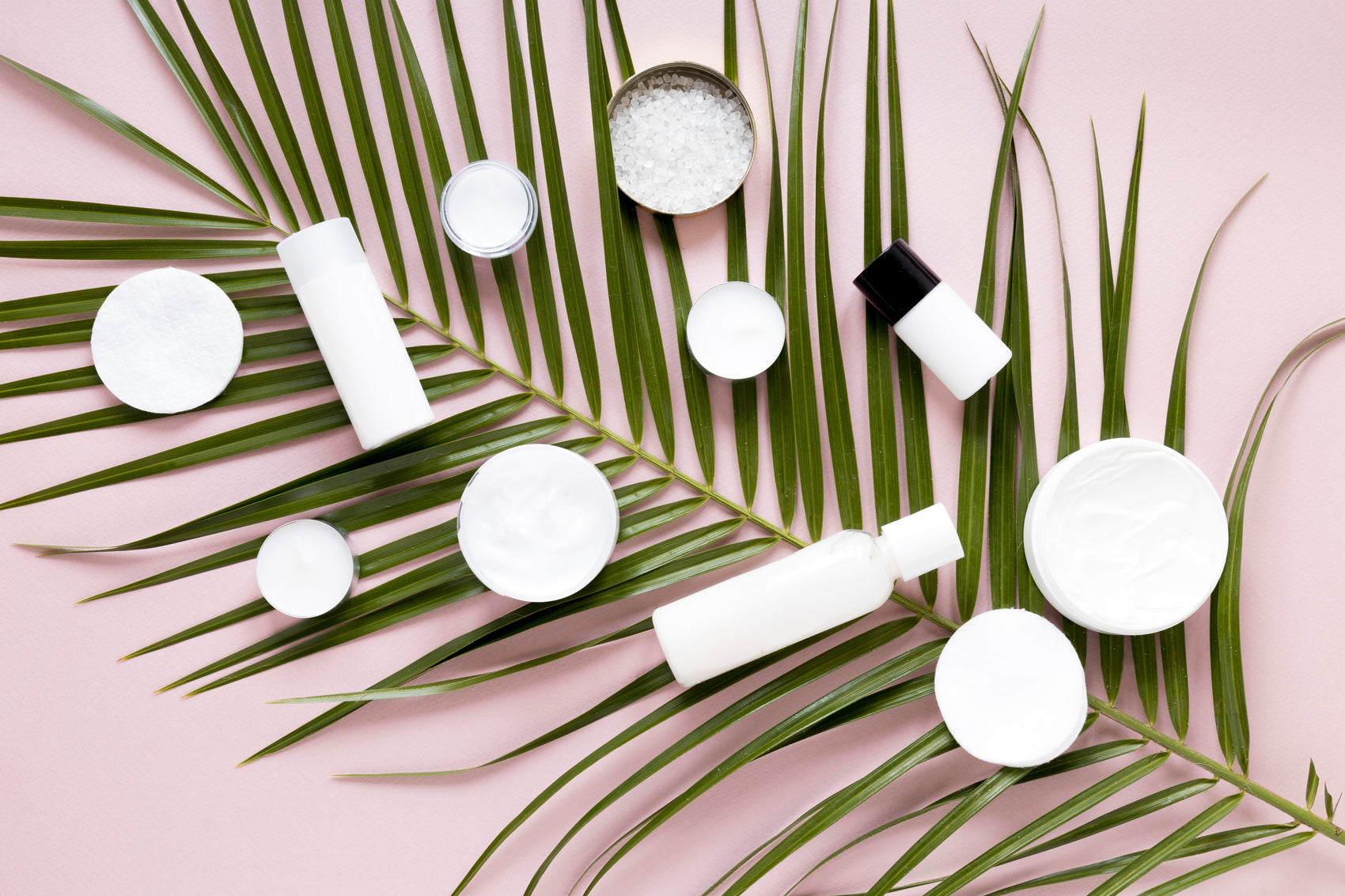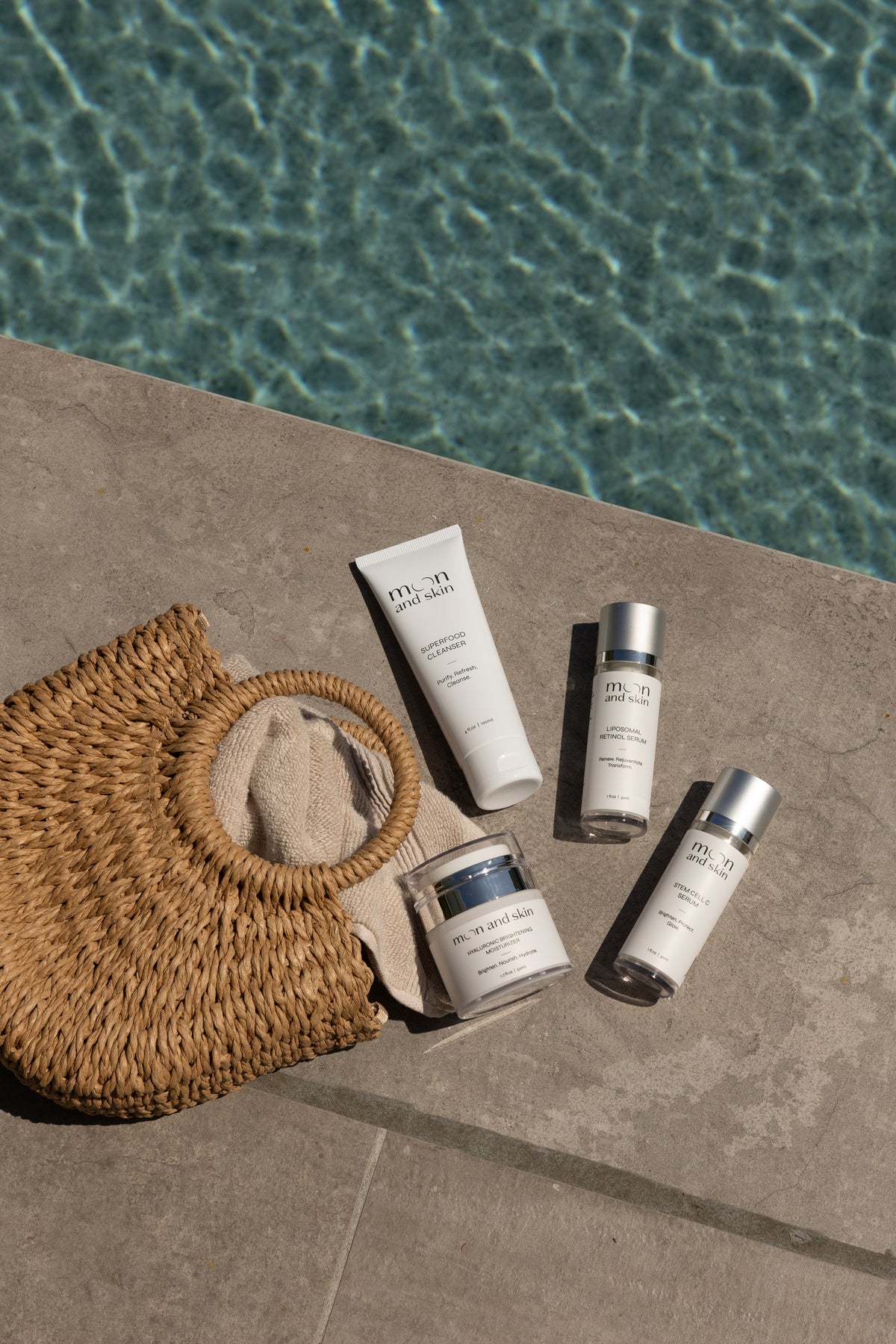Table of Contents
Introduction
Have you ever looked in the mirror and noticed that your skin seems to lack its usual glow? Perhaps it appears dull, tight, or even flaky. If so, you may be experiencing a common yet often overlooked skin condition: dehydration. Surprisingly, dehydrated skin can affect anyone, regardless of their skin type. In fact, many people confuse dehydrated skin with dry skin, leading to the use of incorrect products that can exacerbate the issue.
Understanding how to tell if your face is dehydrated is not only essential for maintaining a healthy complexion but also for selecting the right skincare products to restore your skin's natural balance. At Moon and Skin, we believe in providing clean and thoughtful skincare tailored for every phase of life, and that starts with education about your unique skin needs.
In this blog post, we will explore the signs of dehydrated skin, the differences between dehydrated and dry skin, effective hydration techniques, and how our products can help restore your skin's vitality. Together, we'll navigate this essential aspect of skincare, empowering you to make informed decisions for your skin health.
What Is Dehydrated Skin?
Dehydrated skin is a condition where the skin lacks sufficient water content. Contrary to common belief, this can occur in any skin type—be it oily, dry, or combination. Dehydration can happen due to various internal and external factors, including diet, environmental conditions, and lifestyle choices.
Signs of Dehydrated Skin
Recognizing the signs of dehydrated skin is crucial for timely intervention. Here are some common indicators that your skin may be dehydrated:
- Dull Appearance: Healthy skin has a natural glow. Dehydrated skin often appears lackluster and flat.
- Tightness: If your skin feels tight, especially after cleansing, it may be a sign of dehydration.
- Fine Lines: Dehydrated skin can show fine lines and wrinkles more prominently because it lacks the moisture needed to plump up the skin.
- Dark Circles: You may notice increased darkness under your eyes due to the lack of hydration, giving a tired appearance.
- Flakiness: Dehydrated skin can flake or peel, especially in dry climates or after long exposure to the sun.
- Itchiness: You may experience itchiness or irritation when your skin is dehydrated.
The Pinch Test
One simple way to assess your skin's hydration level is the pinch test. Here's how to do it:
- Pinch a small amount of skin on your cheek, abdomen, or the back of your hand.
- Hold it for a few seconds and then release.
- If it snaps back immediately, your skin is likely well-hydrated. If it takes a moment to bounce back, your skin may be dehydrated.
Dehydrated vs. Dry Skin: Understanding the Difference
It's essential to differentiate between dehydrated and dry skin, as they require different approaches for treatment.
- Dry Skin: This is a skin type characterized by a lack of natural oils (sebum). People with dry skin often experience roughness, flakiness, and discomfort. This skin type can be chronic and requires nourishing products that replenish oil.
- Dehydrated Skin: In contrast, dehydrated skin lacks water. This condition can occur in any skin type and is often temporary. It may be caused by factors such as excessive sun exposure, not drinking enough water, or using harsh skincare products.
Understanding this distinction helps us know how to tailor our skincare routine to address specific needs.
Causes of Dehydrated Skin
Dehydrated skin can result from a variety of factors:
- Environmental Factors: Exposure to wind, sun, and temperature extremes can strip moisture from the skin.
- Poor Diet: A lack of water and hydrating foods in your diet can lead to dehydration.
- Hot Showers: While they may feel good, hot showers can wash away the skin's natural oils and moisture.
- Harsh Skincare Products: Certain cleansers or treatments may be too aggressive, leading to moisture loss.
- Lifestyle Factors: Stress, lack of sleep, and high caffeine or alcohol intake can contribute to dehydrated skin.
How to Hydrate Your Skin
Restoring hydration to your skin is essential for maintaining its health and appearance. Here’s how to effectively rehydrate your skin:
1. Drink Plenty of Water
Hydration starts from within. Aim to drink at least eight glasses of water a day. Incorporating water-rich foods such as watermelon, cucumbers, and oranges into your diet can also aid hydration.
2. Use Hydrating Skincare Products
Choosing the right products is crucial for combating dehydration. Our Hyaluronic Brightening Moisturizer is formulated to deeply hydrate and brighten your skin, making it a wonderful addition to your routine.
3. Incorporate a Hydrating Serum
Serums can provide an extra boost of hydration. Our Stem Cell C Serum utilizes advanced plant-cell technology to brighten and protect while delivering essential hydration.
4. Avoid Hot Showers
Keep your showers warm rather than hot, and limit their duration to avoid stripping your skin of moisture.
5. Use a Humidifier
Especially during colder months, running a humidifier can help maintain moisture levels in the air, which benefits your skin.
6. Apply Moisturizer on Damp Skin
Applying your moisturizer while your skin is still damp can help lock in hydration.
7. Avoid Harsh Ingredients
Stay away from products containing alcohol, heavy fragrances, and other irritants that can exacerbate dehydration.
The Role of Ingredients in Hydrating Your Skin
When selecting skincare products, look for ingredients known for their hydrating properties:
- Hyaluronic Acid: A powerful humectant that can hold up to 1,000 times its weight in water, making it a must-have for any hydrating product.
- Glycerin: Another excellent humectant that draws moisture from the environment into the skin.
- Aloe Vera: Known for its soothing properties, aloe also hydrates and calms the skin.
- Squalane: A lightweight oil that mimics the skin's natural oils, helping to lock in moisture.
Using products that contain these ingredients can significantly improve your skin's hydration levels.
When to Seek Professional Help
If you've tried various hydration methods and your skin does not improve, it may be time to consult a dermatologist. They can assess your skin condition, recommend additional treatments, or prescribe products tailored to your unique needs.
Conclusion
Understanding how to tell if your face is dehydrated and taking steps to address it is crucial for maintaining healthy skin. By recognizing the signs of dehydration, differentiating between dry and dehydrated skin, and implementing effective hydration techniques, you can restore your skin's vitality.
At Moon and Skin, we are committed to providing clean and thoughtful skincare solutions that are suitable for every phase of life. Our Bundle & Save collection offers an excellent way to build a complete skincare routine that includes hydration and nourishment for your skin.
FAQ
Q: Can dehydrated skin be cured?
A: Yes, dehydrated skin can often be improved with increased water intake and the right skincare products.
Q: How can I tell if my skin is dry or dehydrated?
A: Dry skin lacks oil, while dehydrated skin lacks water. The pinch test can help assess hydration levels.
Q: Are there any foods that can help with dehydrated skin?
A: Yes, foods high in water content, such as cucumbers and watermelon, can help hydrate your skin from the inside out.
Q: How often should I apply a hydrating serum?
A: You can use a hydrating serum twice daily, in the morning and evening, for optimal results.
Q: Is it possible to have both dry and dehydrated skin at the same time?
A: Absolutely, it is possible to have both conditions simultaneously, and using products that address both hydration and moisture is essential.
By understanding your skin and taking proactive steps, you can achieve a radiant, healthy complexion. Let’s embrace the journey of skincare together!







